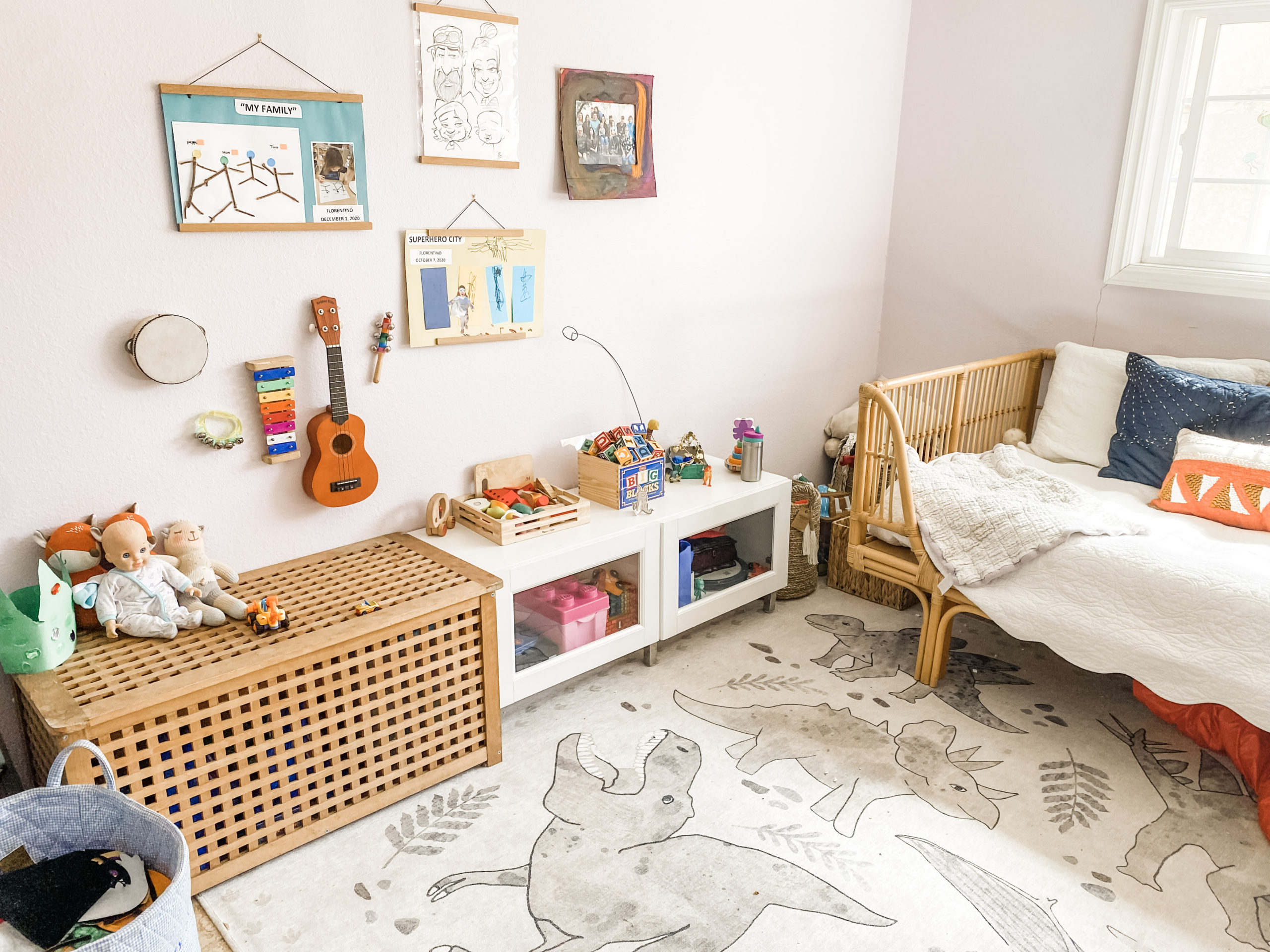15 Ways to Embrace Slow Motherhood

Slow motherhood can mean many different things. As many mothers as there are, there are versions of slow motherhood. But, if you are new to slow motherhood or want a few ideas on ways to embrace slow motherhood, I’ve put together a little list.
For me, there are two key ways to embrace of slow motherhood: simplifying and being present enough to be able to give my little ones my undivided attention at least a little each day and slowing down enough to care for myself. Beyond that, I’ve put together a very incomplete, very arbitrary, very subjective guide. I invite you to take what feels right, what works for you (today or every day), and disregard the rest.
15 Ways to Embrace Slow Motherhood

1. Get outside.
Aside from presence and simplification, this is probably the most important piece for us. When we get outside, we leave the screens inside. We run, we breathe, we notice more around us.
It is proven that nature and sunshine are two of the greatest gifts we can give ourselves daily. Being outside is a free, easy form of self-care and one of the most fun ways I have to connect with my kids.
It also helps with simplification and presence. When I am outside, I naturally am more apt to not “need” a new planter for the family room or that new blouse I saw on Everlane. I am not concerned about the mess in the kitchen or the parking ticket I forgot to pay. I am just me, with my kids, breathing, noticing, being. Something about the fresh air helps me to slow down and be. My kids whine a lot less, so that helps to, you know? 😉
2. Reduce screen time.
Before I had kids, I told myself, “no screen time with the kids.” And, I stuck to it. Until I got pregnant with my second one. Throughout those difficult and nauseous months, I let my toddler basically binge watch whatever he wanted. It was a dark time. And he loved it. Started to depend on it.
Of course, I am not constantly nauseous now, so we’ve found ways to create a bit of balance. I am no longer dogmatic about my “no screens” rules, but I do have for when TV and other screens are allowed, and I am intentional about it. We have family movie nights, the occasional movie picnic, and our daily screen time is almost zero.
More important than their screen time is my own.
In order to slow down, I need to be intentional about my own screen time. And, I actually do set hard rules for myself. An important key, for me, is no screens while doing the actual caretaking: baths, meals, bedtime, etc. No screens in the mornings when I am getting them ready for school or in the evenings after school until bedtime. I am working on an almost-screen-free Thursday and Friday.
These are my rules that work for me. I struggle with them, and fail often.
Find screen time rules that work for you and be mindful of your phone use. I like to set guidelines on the phone itself so that it reminds me of my own rules.
3. Rhythms, not schedules.
There are days when every moment has to be scheduled, our obligations require it. But for the most part, we can set a rhythm for the day, a flow.
By allowing a more flexible day, we make room to slow down and let our kids explore. We create space for them to find what brings them joy. We also allow ourselves to be a little more receptive to their changing needs, and eliminate much of the stress associated with trying to stick to a strict schedule. Because there are days when they are having so much fun that they want to put off snack just a little longer or when nap time runs long because yesterday was so adventurous.
Allowing flexibility allows us to slow down and enjoy the day as it unfolds.
4. Let them lead.
Go on a hike or to a park or around your block with no agenda, just follow and see where it goes. Let them determine the game, your role and the toys they want to play with. And then watch.
5. Less Clutter.
Ok, I struggle here.
But having fewer, higher quality things is key to slowing down. Fewer things to dust, fewer things to put away, and fewer things to replace all leave more time for everything else.
I talk a little about decluttering (including your mental clutter) here, here, and here. I am certainly far from an expert, but the efforts that I have made to declutter allow me to spend less time cleaning and encourage my kids to play independently more.
6. Encourage free play.
Just let them play, however they want to play. Resist the urge to direct or demonstrate. Watch and listen, and then follow along.
7. Focus on slowing your mornings.
A slow morning is a great start and helps set the tone for the day.
Ease your transitions, eat breakfast, put your phone away. Set yourself up for success by making things easier the night before. Do every single thing you can to not rush. I talk a little more about slow mornings here.
I really believe that a slow morning is one of the best ways to embrace slow motherhood and lead to a slower, simpler life. And if it doesn’t, at least you’ve had a slow morning, right?
8. Say no, intentionally.
We, as mothers, are so bad at no. We often agree to things that we know we don’t have time for, aren’t interested in doing, and later dread. Learn to say no to these things. Say no makes room for simplicity and slow. It also gives you freedom from the things you end up resenting. Now to work on the inevitable guilt from saying no…
9. Say Yes.
“Mama, do you want to play wrangle sharks with me?” Yes.
Just as important to saying no intentionally, is saying yes to things that bring connection and ease. Determining which is which can take some reflection, but is worth it.
10. Schedule time for rest.
Down days, do nothing time, mental health breaks, whatever you want to call it. Book rest into your schedule.
Allow your yourselves to have days where nothing at all is scheduled, and if something happens, great. If you end up puttering around the house, also great. Just allow the day to unfold. Unscheduled, unrushed.
If you’re anything like me, you will be surprised at how fulfilling these days are, how easy and joyful your kids are, and how connected you feel at the end of them. Just be sure not to get sucked into your projects. These scheduled times are for actual rest and spontaneity, not for reorganizing your pantry (as badly as it may need it!)
11. Just sit with them.
I often just sit nearby while my kids play on the floor. They play together and I watch. Sometimes, they invite me to play, sometimes they just laugh together. But, I am available and sitting quietly. Usually, I have a book in my hands and sometimes, I even get to read it. It is a time when we are all together, and I am totally available to them, but they are still often playing independently. Which brings me to…
12. Encourage independent play.
This is challenging for us. My preschooler has a very difficult time playing alone, but we are working on it.
Encouraging independent play allows you to do the things you have to do or sometimes even creates room for you to do the things you want to do. Hallelujah.
Set up areas in your home that allow them to use their imaginations, make messes, and get creative.
Strew, and then walk away. Get them started with a game or activity, and then walk away. It may take some time for them to get accustomed to playing independently, but once they do, it makes a world of difference, even if just for 15 minutes. They will likely end up talking to themselves in the sweetest way possible. I fall in love with my preschooler over and over again watching him play.
Independent play is enormously important for child development. But, for slow mothers, it allows us to have time to ourselves, while our kids are learning, doing, playing. It gives us a few moments to take a breath, slow down, and take care of ourselves.
13. Encourage them to get involved in what you are doing.
My toddler loves to help. My preschooler, not as much. But, I do my best to get them both involved. They help make their breakfast, I have a few chores for each of them, and I bring them to work from time to time. I involve them in my life, because that is where they want to be.
14. Walk.
As many places as possible. Around the block, to the store. Just get going with your little ones. Allow them to set the pace. You will be surprised what they notice on the way around the block.
15. Let them wear shorts.
Ok, attire might not seem like one of the obvious ways to embrace slow motherhood, but hear me out…
My preschooler has a friend who wears jammies to school everyday. A few months ago, he asked if he could wear jammies to school, like his friend. I wanted to say no. We get dressed for school. But, really, do we need to? No. We don’t. So, I agreed. And he was thrilled. He got to be like Jacob for the day.
In the middle of January, he either wears jammies or shorts. I am cold just thinking about it (note: we live in Southern California. Shorts in January makes me feel cold, but it isn’t a safety issue. I would most certainly draw a firm line if it were). What he wears to school most days isn’t important. What is important is that we have a peaceful morning and he gets off to school without unnecessary struggles. So, I let him wear shorts. He has a pair of pants and a sweatshirt to change into if he needs it (he never does).
In other words, pick your battles.
Certain things just aren’t worth it and determining what you can let go will certainly allow you and your little ones to live a simpler, slower life.
—
This is just my list, the things that work for me, and have allowed us to find ways to embrace slow motherhood and simplify our lives. There are obviously hundreds of paths to slow motherhood. If you are looking for more ideas, I invite you to sign up for my 5-day Slow Motherhood Challenge. And, I’d love to hear the ways you’ve slowed down.
















